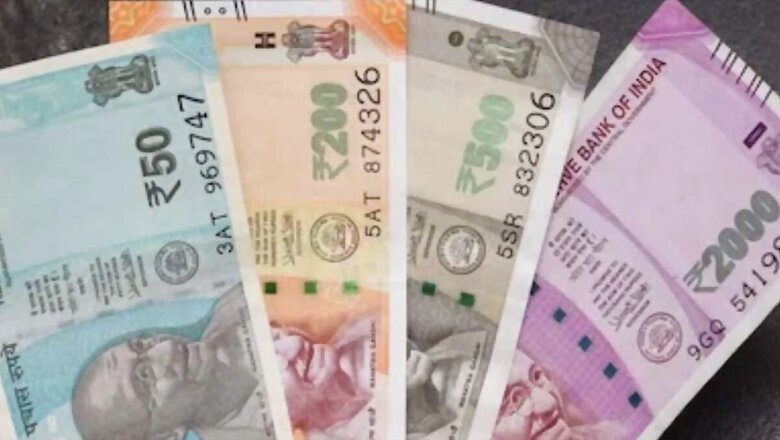
views
India’s banknotes serve as a canvas that depicts history, culture, and ideals of the country in addition to serving as a means of transaction. Globally, banknotes frequently honour notable individuals. For example, US dollars feature George Washington, Pakistani notes feature Muhammad Ali Jinnah, and Chinese notes feature Mao Zedong. Mahatma Gandhi’s image has become associated with Indian money. It’s amazing to still witness Mahatma Gandhi’s picture on paper currency so long after India gained its freedom. Few are aware that things weren’t always like this. The idea to put Gandhiji’s picture on banknotes was first turned down after independence. Twenty two years after independence, this was approved, that too for only one rupee. Let’s know about the story behind this.
Making of notes after independence
After independence, Mahatma Gandhi’s picture was expected to be printed on currency notes, instead of a British ruler. The Reserve Bank of India website states that in 1949, the Indian government created a brand-new one-rupee note for the first time. India needed to select a new symbol at that time to represent its independence. At that time, it was agreed that the Ashoka Pillar should be printed on the note in place of Mahatma Gandhi’s picture. There was no agreement at the time on the printing of Mahatma Gandhi’s image on Indian banknotes.
Other than this, the note’s design remained mostly unchanged. Following that, two, five, ten, and hundred rupee notes were issued for the first time in the Republic of India in 1950. The image of Mahatma Gandhi was absent from even that.
After Independence, India’s progress and rich legacy were commemorated on banknotes for many years. Memoranda from the 1950s and 60s included pictures of regal creatures like deer and tigers. There were also representations of industrial progress on notes, such as the Brihadeshwara temple, the Aryabhatta satellite, and the Hirakud dam. All of this demonstrated India’s emphasis on modernity and growth while preserving its rich cultural legacy.
When was the first time Mahatma Gandhi was featured on banknotes?
In 1969, he made his first appearance on banknotes. In 1969, the Reserve Bank of India released a one-rupee note featuring a picture of Mahatma Gandhi. In observance of Mahatma Gandhi’s 100th birthday, RBI took this action. Mahatma Gandhi was depicted sitting in this, with Sevagram Ashram in the distance. 49 years after independence, a whole series of notes honouring Mahatma Gandhi were released, with his image initially appearing on the one rupee note.
Where Did Gandhiji’s Picture Come From?
The image of Mahatma Gandhi that appears on Indian banknotes is a cutting from an original photograph, not a parody. This image was taken in 1946 outside Rashtrapati Bhavan, which was then Viceroy House. British politician Lord Frederick William Patrick Lawrence was beside him in this shot.
The RBI reprinted Mahatma Gandhi’s picture on a different note after 18 years. This note, worth 500 rupees, was issued in 1987. RBI later stopped issuing this note in 1996. The Reserve Bank produced a new series of notes with a picture of Mahatma Gandhi in 1996. All of the notes included a picture of Mahatma Gandhi. There were new security elements printed on these Mahatma Gandhi series notes. Its watermarks were altered.
Over the past few years, there have been repeated requests by different groups to have Gandhi’s picture removed from the notes. There have been suggestions for substitutes, including Sardar Patel, Jawaharlal Nehru, Subhash Chandra Bose, and even gods like Ganesh and Lakshmi. Such a request was turned down. During the first term of the Modi government, Arun Jaitley, the Finance Minister, stated in a speech to the Lok Sabha that the Reserve Bank panel had determined that pictures of leaders other than Mahatma Gandhi could not be printed on banknotes. Because Mahatma Gandhi is the best individual to represent this nation.















Comments
0 comment